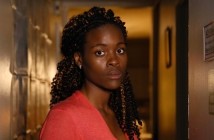Editor’s Notes: Sin City: A Dame to Kill For opens in wide release on 22 August.
Film noir, literally translating from French to “black film”, is perhaps the most resilient yet evolving genre of cinematic history, if ‘genre’ is a term that can indeed be applied to film noir. Though easily identified in film, the term ‘film noir’ itself usually refers to the mood and political and social context of the film in question, but for argument’s sake, film noir can be credited as its own genre. Conceived in the early 1940s and greatly influenced by the “hardboiled fiction” spawned from the Great Depression, film noir is a tight-fisted collection of particular plot devices, elements of mise-en-scene and key characteristics specific to the genre that include a certain visual style that consists of low-level shots, poor lighting, darkened shadows and obscuring cinematography angles; a narrative that revolves around crime from the perspective of the investigator, such as murders, robberies or suicides; a non-linear plot intended to disorient the viewer and further enhance the ominous nature of the storyline and the impending sense of bleak hopelessness and doom; a less-than-typical “hero” or protagonist portrayed in an unsympathetic light with questionable characteristics or personal backgrounds - film noir is often said to have conceived the modern anti-hero - and last but not least, the “femme fatale”: a seductive and enigmatic love interest that often leads the protagonist into uncompromising situations.
 Though put to rest by the end of the 1950s by what critics refer to as “the last true film noir” - the Orson Welles-fronted Touch of Evil - the genre had a triumphant run in Hollywood in years prior with such classic film noirs emerging as The Third Man, Double Indemnity, Laura and The Postman Always Rings Twice that will forever hold their standings as some of the greatest cinematic endeavours of the twentieth century. Though such glory days of film noir are undoubtedly over, the genre didn’t disappear entirely; it merely evolved along with the ever-changing age of filmmaking. As technology and society changed, film noir accompanied and embodied such changes but never lost its basic principles and thus out of the ashes, film noir was reborn as neo-noir. This enigmatic and alluring filmmaking genre has pervaded modern films ever since.
Though put to rest by the end of the 1950s by what critics refer to as “the last true film noir” - the Orson Welles-fronted Touch of Evil - the genre had a triumphant run in Hollywood in years prior with such classic film noirs emerging as The Third Man, Double Indemnity, Laura and The Postman Always Rings Twice that will forever hold their standings as some of the greatest cinematic endeavours of the twentieth century. Though such glory days of film noir are undoubtedly over, the genre didn’t disappear entirely; it merely evolved along with the ever-changing age of filmmaking. As technology and society changed, film noir accompanied and embodied such changes but never lost its basic principles and thus out of the ashes, film noir was reborn as neo-noir. This enigmatic and alluring filmmaking genre has pervaded modern films ever since.
Though true modern film noirs are thin on the ground, an abundance of neo-noir films reared their heads in the 1970s and 1980s. Most notably, Martin Scorsese’s seminal Taxi Driver is a perfect example of neo-noir. Travis Bickle is undoubtedly one of the greatest anti-heroes ever written, and his brooding midnight taxi journeys around a depraved and corrupt New York are reminiscent of the earlier greats of the genre; per the principles of film noir, the overbearing sense of utter bleakness that pervades the script is unshakeable. It’s certainly no mystery why Taxi Driver is considered one of the greatest films ever made. Following this modern example of neo-noir is Ridley Scott’s 1982 film Blade Runner, a SF adaptation of a famed Philip K. Dick novel, Do Androids Dream of Electric Sheep? Though opening to poor box office revenue and unfavourable perception at the time of release, Blade Runner has since reached cult classic status; the mise-en-scene dominated by a dark dystopian shadow accompanied by Vangelis’s sultry, brooding original soundtrack score oozes film noir. Rick Deckard, the morally ambiguous protagonist, is portrayed as mysterious and untrustworthy, perhaps as much so as the film’s antagonists. Much can be taken from Scott’s masterful and artful sci-fi, but nothing so much as the heavy presence of classic film noir within the narrative and execution of its filmmaking.
As technology and society changed, film noir accompanied and embodied such changes but never lost its basic principles, and thus noir was reborn as neo-noir.
The notion of the “femme fatale” made a particular resurgence in the late 1980s and early 1990s with films emerging such as Disclosure, Basic Instinct and Fatal Attraction. For a fleeting few years, Hollywood became obsessed with the character profile of an erotic, attractive, lusty female with death and revenge on her mind, willing to stop at nothing to find a means to her end. The films in question often depicted a morally questionable male protagonist alongside the femme fatale, fitting into the stereotypes of film noir. Taking Fatal Attraction and Basic Instinct as exemplar films, Michael Douglas portrays an infidel husband and a drug-abusing, morally corrupt cop, respectively. Though such films undoubtedly tipped the scales slightly in terms of a balance of elements of film noir, it’s certainly not difficult to ascertain the origins of such noir presences in these films.
 Post-2000 neo-noir has palpably seen a dip in demand for the genre, with current releases tending to be aimed at a rather niche audience owing to the specific dramatic and film flair that the genre embodies, which certainly is not for everyone. Despite this, neo-noir has had a strong and undeniable presence in film over the last decade; David Fincher’s Zodiac is just one of many to emerge in recent years that would not look out of place next to The Maltese Falcon, as well as the truly disorientating but rewarding Memento, Se7en, Pulp Fiction and, of course, Robert Rodriguez’s Sin City. Sliding neatly into both comic book adaptations and neo-noir, Sin City is as true to the genre as any classic; the dark, brooding mise-en-scene, expressionist lighting, dull colour palette consisting of greyscale with the exception of rouge for the female characters, an unreliable and morally confusing narrator, a plot line consisting of several threads to be tied up and worked out by the viewer and last but not least, an overbearing and inescapable sense of impending doom. With a sequel ready to hit cinemas in the next few days - Sin City: A Dame to Kill For - neo-noir certainly looks to be making a comeback for the modern age of filmmaking.
Post-2000 neo-noir has palpably seen a dip in demand for the genre, with current releases tending to be aimed at a rather niche audience owing to the specific dramatic and film flair that the genre embodies, which certainly is not for everyone. Despite this, neo-noir has had a strong and undeniable presence in film over the last decade; David Fincher’s Zodiac is just one of many to emerge in recent years that would not look out of place next to The Maltese Falcon, as well as the truly disorientating but rewarding Memento, Se7en, Pulp Fiction and, of course, Robert Rodriguez’s Sin City. Sliding neatly into both comic book adaptations and neo-noir, Sin City is as true to the genre as any classic; the dark, brooding mise-en-scene, expressionist lighting, dull colour palette consisting of greyscale with the exception of rouge for the female characters, an unreliable and morally confusing narrator, a plot line consisting of several threads to be tied up and worked out by the viewer and last but not least, an overbearing and inescapable sense of impending doom. With a sequel ready to hit cinemas in the next few days - Sin City: A Dame to Kill For - neo-noir certainly looks to be making a comeback for the modern age of filmmaking.




